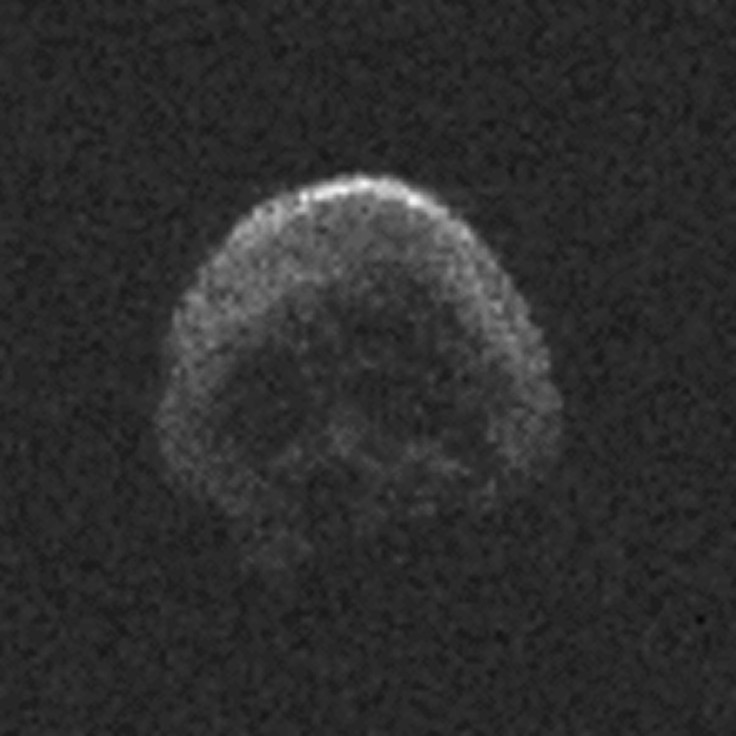The skull-shaped asteroid that whizzed past Earth on Halloween 2015 is coming back
The return of the space object in 2018 will give astronomers another opportunity to study and discern its features.

A skull-shaped asteroid that whizzed past Earth around the night of Halloween 2015 will fly by our planet again, this time in November 2018.
Back in mid-October 2015, a group of astronomers using the Pan-STARRS telescope in Hawaii discovered a weird asteroid that had an uncanny resemblance to a human skull when seen in the right lighting. The overall shape and features -- 'eyes' and 'nose' -- of the object looked a lot similar to that of a real human skull.
Things got even creepier when a few weeks later around Halloween night, the spooky space object, measuring about 2250-2300ft in size, made its closest approach, zipping past Earth at a distance of about 486,000 km or about 1.3 times the distance to the moon.
Now, the same asteroid, officially dubbed 2015 TB145, is set to make a comeback. The object, according to a report in Phys.org, is currently 3.7AU away and will zip past Earth sometime in November 2018.
This time, however, it will make a much farther approach, estimated to be 105 times the distance between Earth and Moon.
During Halloween asteroid's last flyby, astronomers from Nasa and different parts of the world used different telescopes to capture its images and study its characteristics.
Calling it an Apollo-type near-Earth asteroid, Astrophysicist Pablo Santos-Sanz from the Institute of Astrophysics of Andalusia (IAA-CSIC) revealed the techniques they used to capture the object.
"On the one hand, we used optical telescopes from the Sierra Nevada Observatory in Granada, the Calar Alto Observatory in Almería and the La Hita Observatory in Toledo; and on the other, we analysed it in the mid-infrared using the Very Large Telescope (VLT) VISIR instrument at the European Southern Observatory (ESO) in Cerro Paranal, Chile."
Their observations revealed that the asteroid carries shape of a slightly flattened ellipsoid and "is very dark, only slightly more reflective than charcoal".
The return of the weird space object in 2018 has given Santos-Sanz and other astronomers another opportunity to study and discern its characters. "Although this approach shall not be so favourable, we will be able to obtain new data which could help improve our knowledge of this mass and other similar masses that come close to our planet," the researcher says.
After this, the skull-shaped asteroid will appear in 2088, zooming past Earth by 20 lunar distances.





















